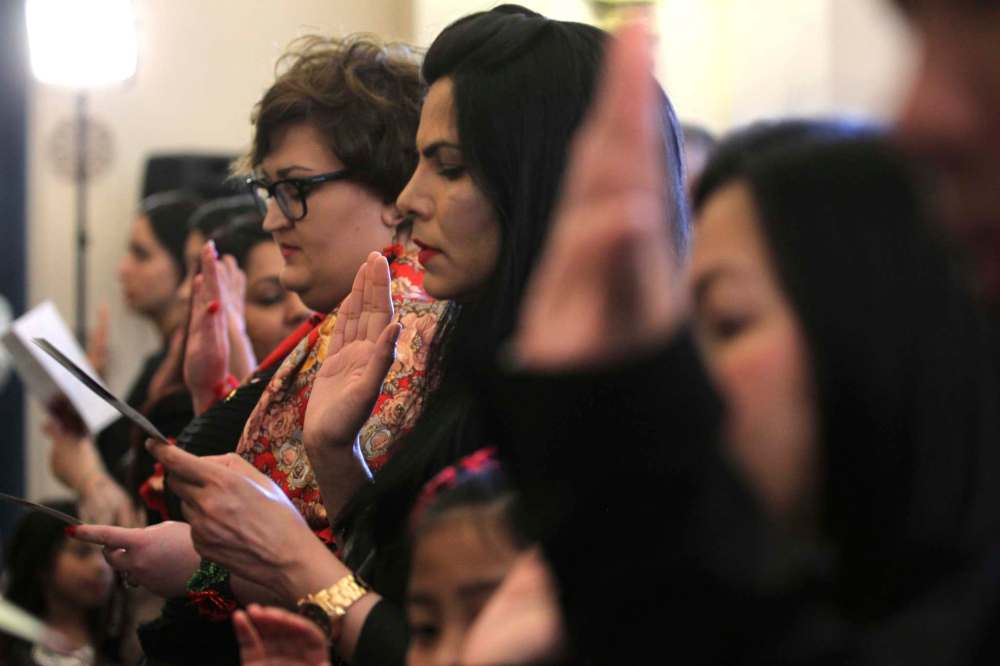Manitobans increasingly living alone, immigrants taking up English: census
Advertisement
Read this article for free:
or
Already have an account? Log in here »
To continue reading, please subscribe:
Monthly Digital Subscription
$0 for the first 4 weeks*
- Enjoy unlimited reading on winnipegfreepress.com
- Read the E-Edition, our digital replica newspaper
- Access News Break, our award-winning app
- Play interactive puzzles
*No charge for 4 weeks then price increases to the regular rate of $19.00 plus GST every four weeks. Offer available to new and qualified returning subscribers only. Cancel any time.
Monthly Digital Subscription
$4.75/week*
- Enjoy unlimited reading on winnipegfreepress.com
- Read the E-Edition, our digital replica newspaper
- Access News Break, our award-winning app
- Play interactive puzzles
*Billed as $19 plus GST every four weeks. Cancel any time.
To continue reading, please subscribe:
Add Free Press access to your Brandon Sun subscription for only an additional
$1 for the first 4 weeks*
*Your next subscription payment will increase by $1.00 and you will be charged $16.99 plus GST for four weeks. After four weeks, your payment will increase to $23.99 plus GST every four weeks.
Read unlimited articles for free today:
or
Already have an account? Log in here »
Hey there, time traveller!
This article was published 02/08/2017 (3045 days ago), so information in it may no longer be current.
OTTAWA — More Manitobans are living alone, while the province leads the country in foster children, according to 2016 census data released Wednesday that largely saw the province echo national trends.
The data also suggest that the province’s French-speakers are losing demographic clout due to immigrants taking up English.
Like the rest of Canada, more Manitobans are living alone. The 2016 data recorded 27.7 per cent of Manitoba households as one-person dwellings, close to the 28.2 per cent national average, which has steadily risen since the ’50s.

Statistics Canada attributes this continuous increase to baby boomers becoming empty nesters. Nationally, the number of couples with children is still rising, by 2.3 per cent, but not as fast as those without children, at 7.2 percent.
Yet Manitoba has a slightly higher proportion of couples with children than the national average of 51.1 per cent. That’s in line with data released this spring that showed Manitoba bucking a national trend of seniors outpacing children.
Manitoba echoed most national housing trends, with a growing proportion of common-law households (15.7 per cent) and multigenerational households (2.7 per cent).
Meanwhile, the Winnipeg area is seeing far fewer boomerang kids than many Ontario cities. Just 33.1 per cent of young adults aged 20 to 34 still live with their parents. That’s close to national average of 34.7 per cent, but drastically lower than Toronto (47.4 per cent), St. Catharines (40.7 per cent) or Vancouver (38.6 per cent).
Statistics Canada defines the Winnipeg area as the city and commuter towns, like St. Paul and Springfield.
Manitoba children in foster care
Manitoba also leads the country in children living in foster care, with 2.1 per cent of children aged zero to 14 in the foster system in 2016. Most of them are Indigenous.
Manitoba, Saskatchewan and the territories all reported a higher proportion of children who don’t live with their parents, whether they live with relatives or in a foster home. For these areas, that accounts for three to six per cent of children, compared to less than two per cent of children in every other province.
The census started recording foster children and stepfamilies in 2011.
Immigrants learning English, not French
Manitoba’s French-speaking population remained largely stable, but its share of the population is quickly dropping due to immigrants taking up English.
Francophones accounted for 3.5 per cent of Manitoba’s population in 2011, and dropped to 3.2 per cent in 2016, though this only means roughly 500 fewer people.
In an interview, a senior statistician said the data suggest integration is successful in Manitoba and Canada, because 23 per cent of Canadians have a foreign language as their mother tongue, but just 16.6 per cent speak an unofficial language at home.
“What we see in Manitoba is not really different for what we see elsewhere in Canada,” said Jean-Pierre Corbeil, an assistant director for Statistics Canada’s language and immigration division.
While Manitoba saw a six per cent population growth since the 2011 census, those speaking immigrant languages (not English, French or Indigenous ones) jumped by 18 per cent. Tagalog is the top immigrant language in Manitoba, and the Philippine tongue also tops the charts in the other Prairie provinces and the territories.
Manitoba’s second most-spoken foreign language is Punjabi. European languages like Ukrainian and German saw a decrease across Canada, including in Manitoba.
Census release ongoing
Wednesday’s census release is this year’s third publication of 2016 data, with population and dwelling types released earlier this year. In the fall, Canadians will learn about trends in income, immigration and commuting.
The latest release is likely to influence how Manitoban municipalities and corporations shape the housing market, child care and caregiving for the elderly, as well as how Ottawa forks out tax credits.
While the 2016 census saw a historic response rate, Statistics Canada will not publish granular data for roughly just over a dozen Manitoba communities. Most of these, like parts of Shoal Lake and Opaskwayak Cree Nation, are because of a low population that would too easily reveal confidential information. In the case of Buffalo Point 36, more than half of residents did not complete the census.
“We’re pretty confident our data for 2016 are pretty robust.” Corbeil said.
dylan.robertson@freepress.mb.ca


History
Updated on Wednesday, August 2, 2017 9:11 AM CDT: Moves table
Updated on Wednesday, August 2, 2017 9:19 AM CDT: Adds photo


